Experience feedback on the implementation of an ultrasound-based preventive maintenance program.
Today, we would like to share an experience feedback from a paper mill that has implemented a preventive maintenance program to monitor rotating machines using ultrasound technology. SDT International helped implement this monitoring program by training and coaching the teams in charge of mechanical maintenance reliability. The purpose of this program is to monitor a fleet of about 70 rotating machines during the year after its implementation and to extend it to 100 machines over the second year.
This paper mill has relied on preventive maintenance for many years, using known and proven technologies for the monitoring of rotating machines. In 2018, they decided to extend this monitoring to equipment with rotation speeds up to 30 RPM, as well as to their speed-reducing gears.
They purchased an SDT270 type ultrasound detector, in DU version, along with its UltrAnalysis (UAS) software, and SDT International and the Reliability department of the paper mill developed a training program suited to the rotating machinery monitoring program. The first step consisted in creating the database including these 70 machines, and then in recording an initial measurement of the mechanical status of each bearing and each gear. After a simple onsite analysis (ultrasonic listening) and a more detailed analysis (overall or static measurements and spectral or dynamic measurements) using UAS, pre-alarm, alarm and danger thresholds were assigned to each measurement point.
This background work, which is required, allows technicians of the reliability department in charge of the measurements routes to get a quick overview of the asset hierarchy and immediately see the machines that have an alarm status.
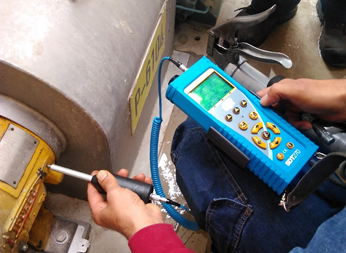
Display of the database in the UAS software
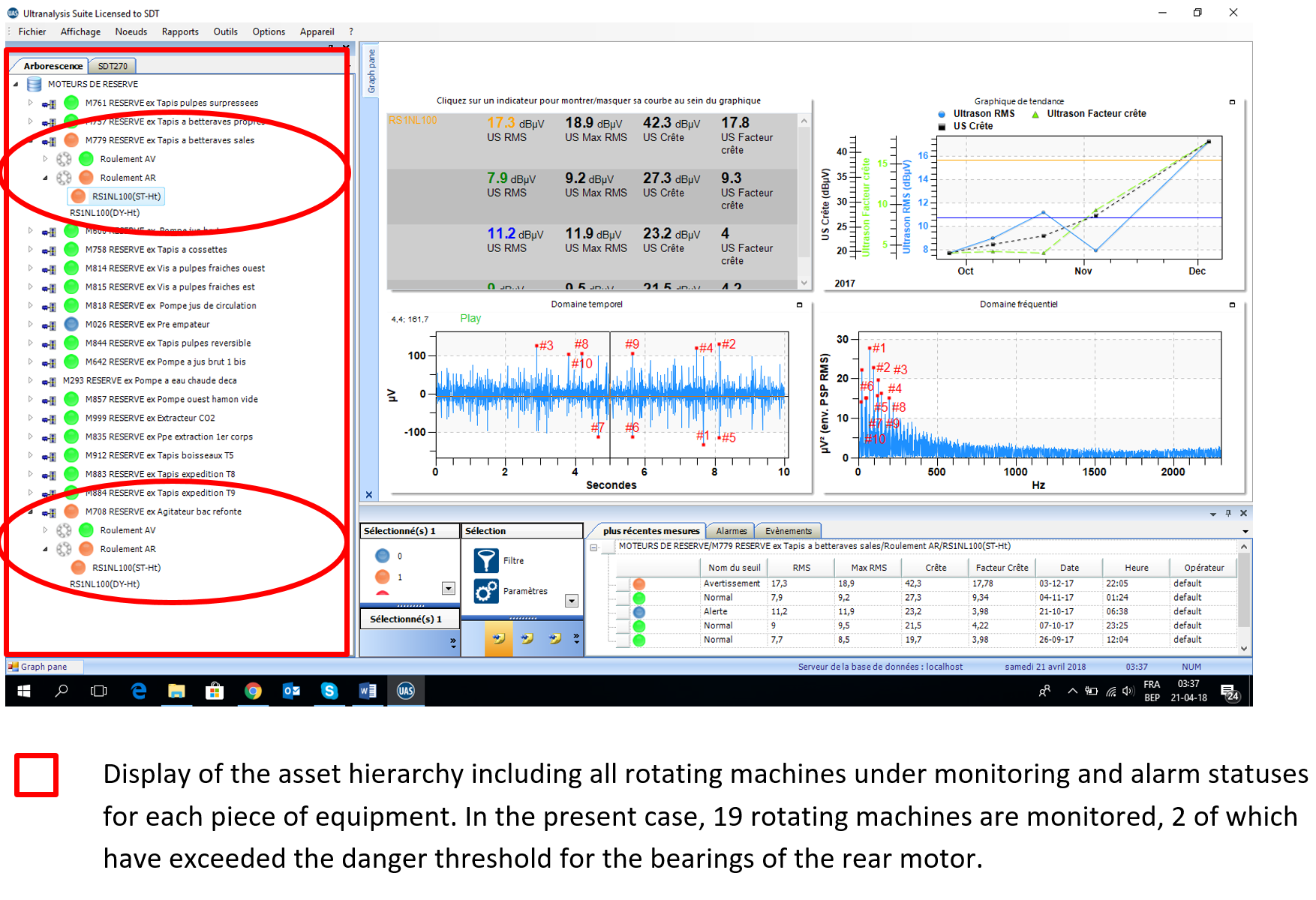
Issue
This preventive maintenance program has 3 objectives:
- Highlight the efficiency of ultrasound measurements on rotating machines.
- Issue a relevant diagnosis.
- Offer preventive maintenance with reliable indicators.
Experience feedback after onsite measurement sessions from October 2018 to November 2019
Monitoring of a parallel reduction gear
- Machine: Decanter – High-speed input bearing of the reduction gear
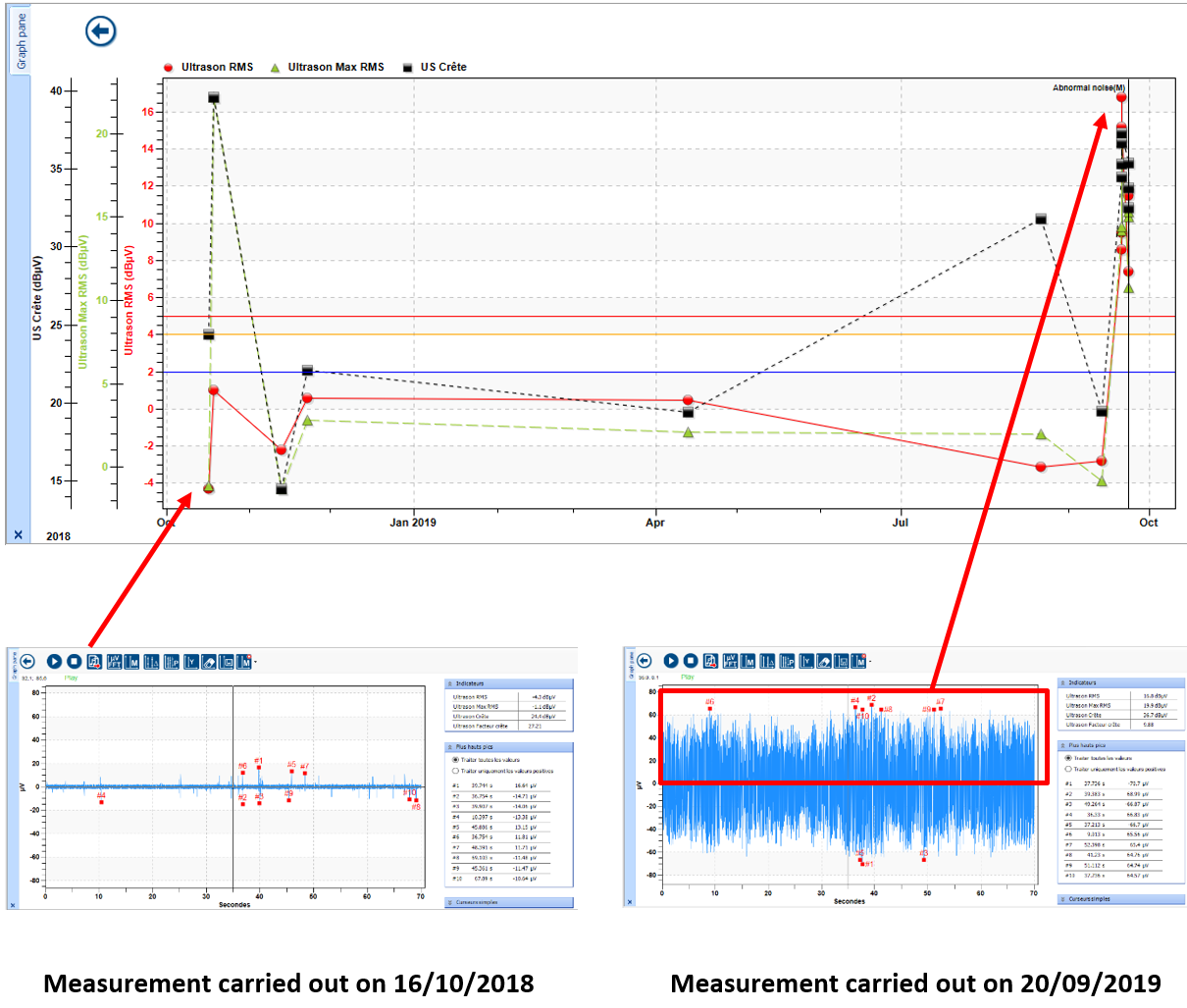
On the time spectra (same scale), we can observe the occurrence of shocks compared to the first measurement carried out in 2018. The trend curves show the evolution of the RMS static value: from -4.3 dBµV in 2018 to +16.8 dBµV in 2019.
Based on SDT criteria, this increase corresponds to the early failure of a mechanical part of the reduction gear (bearings and/or gears).
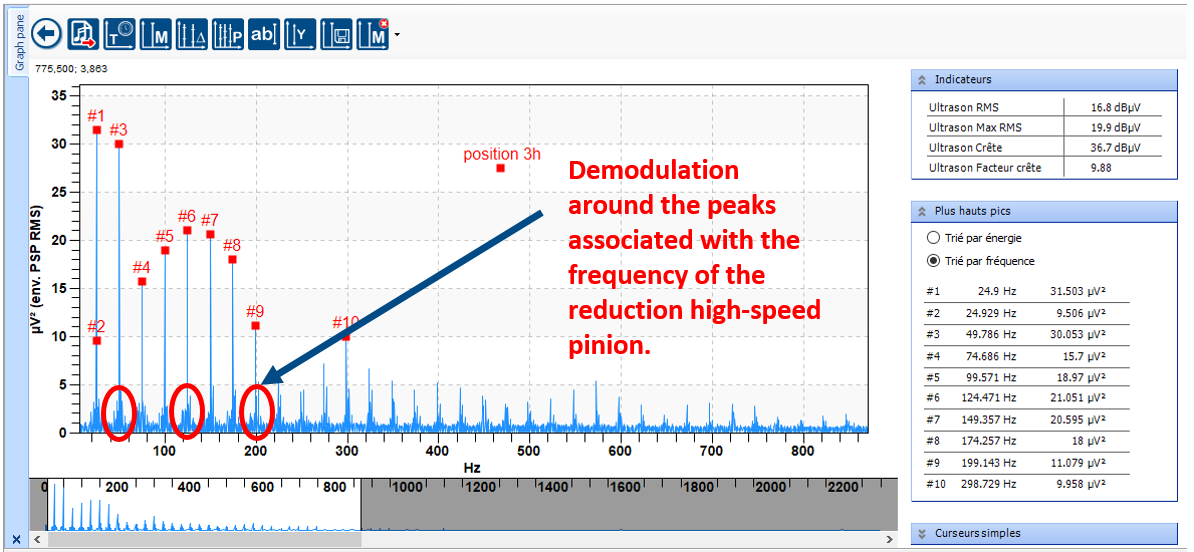
Listening to the bearing and analysing the frequency spectra (see chart below) has allowed confirming this diagnosis by observing the emergence of significant peaks associated with this gear damage.
We can observe repeated shocks associated with the frequency of the high-speed input drive pinion of the reduction gear (24.93 Hz and its harmonics) with demodulation at each peak. Broken tooth and teeth clearance. Replacement of the reduction gear during a scheduled production shutdown, which avoided an untimely breakdown which could have generated significant expenses due to production losses.
Wear detected on the tooth of the worm screw of a reduction gear, wheel and screw:
- Machine: Lime mud filter agitator – High-speed input bearing of the reduction gear
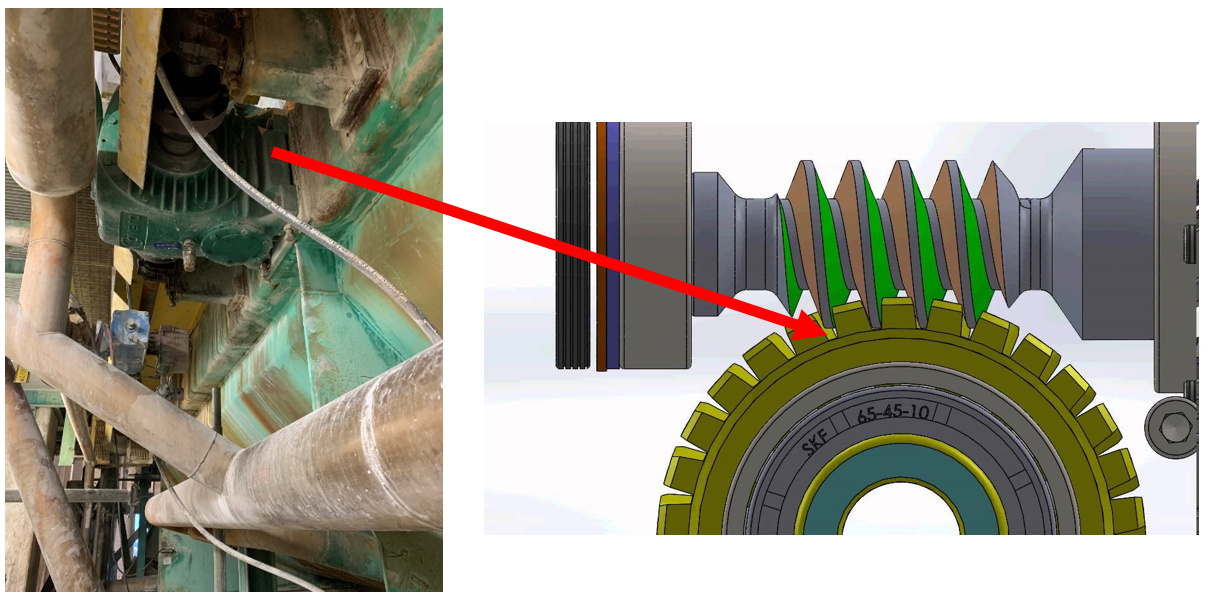
We can observe that between each revolution of the worm screw, there is a phenomenon occurring, which can be heard through the ultrasound detector as a sliding of the gear (worm screw/bronze wheel).
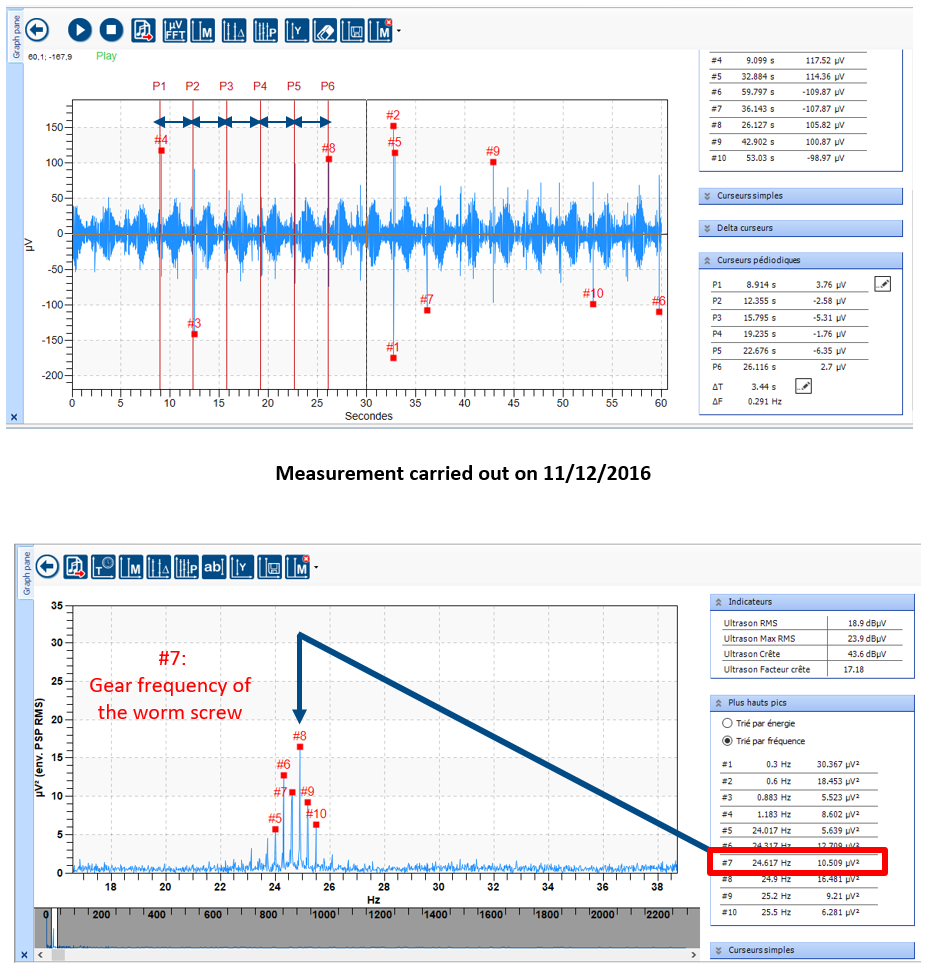
Zooming in on the FFT frequency spectrum allows highlighting dissymmetry of the modulation around the meshing frequency, which is characteristic of a damaged gear mesh.
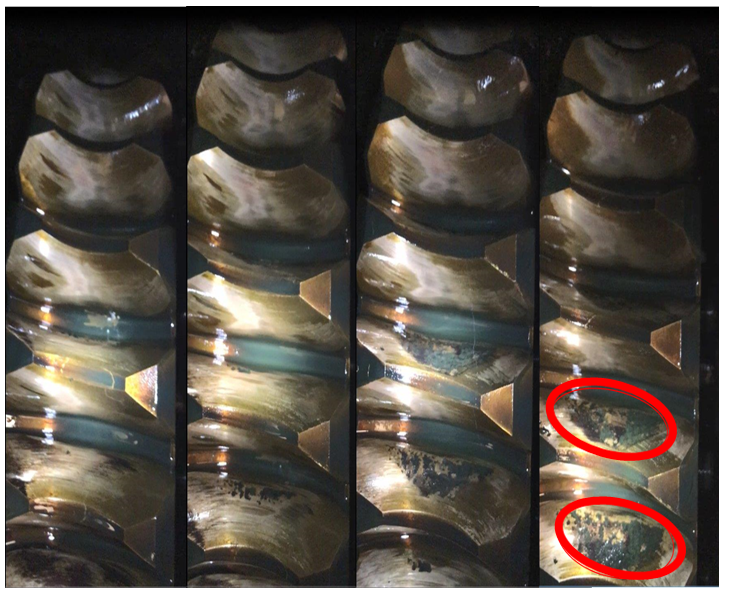
The endoscopic video inspection of the worm screw of the reduction gear confirmed the ultrasound diagnosis.
The customer took the reduction gear down during a production shutdown.

Monitoring of the degradation of the bearing of a low-speed reduction gear (opposite transmission):
• Machine: Vertex separator reduction gear – 4-train parallel reduction gear
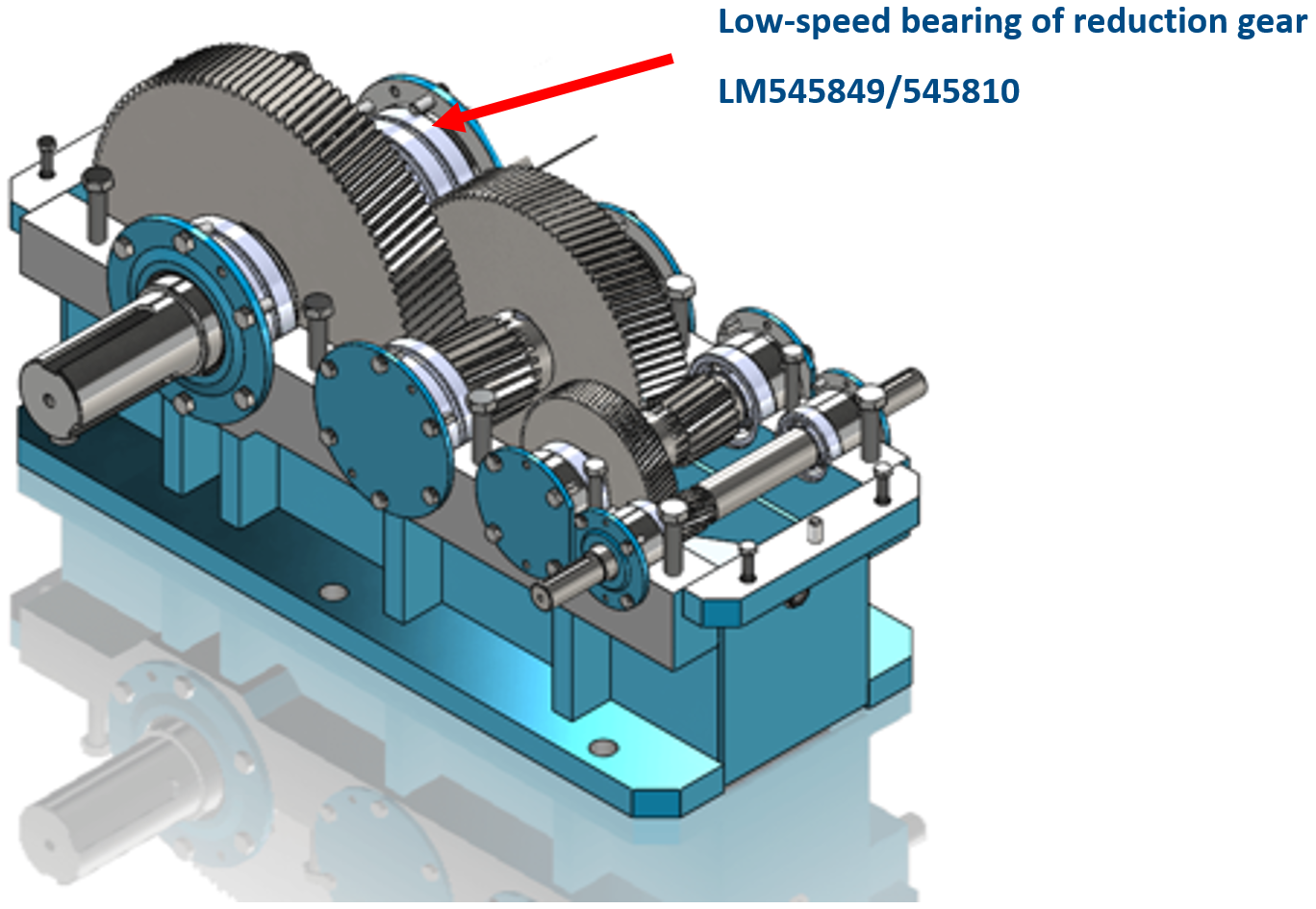
From the beginning of the monitoring of this reduction gear (August 2018) using ultrasound technology, the occurrence of shocks can be observed on the time spectrum.
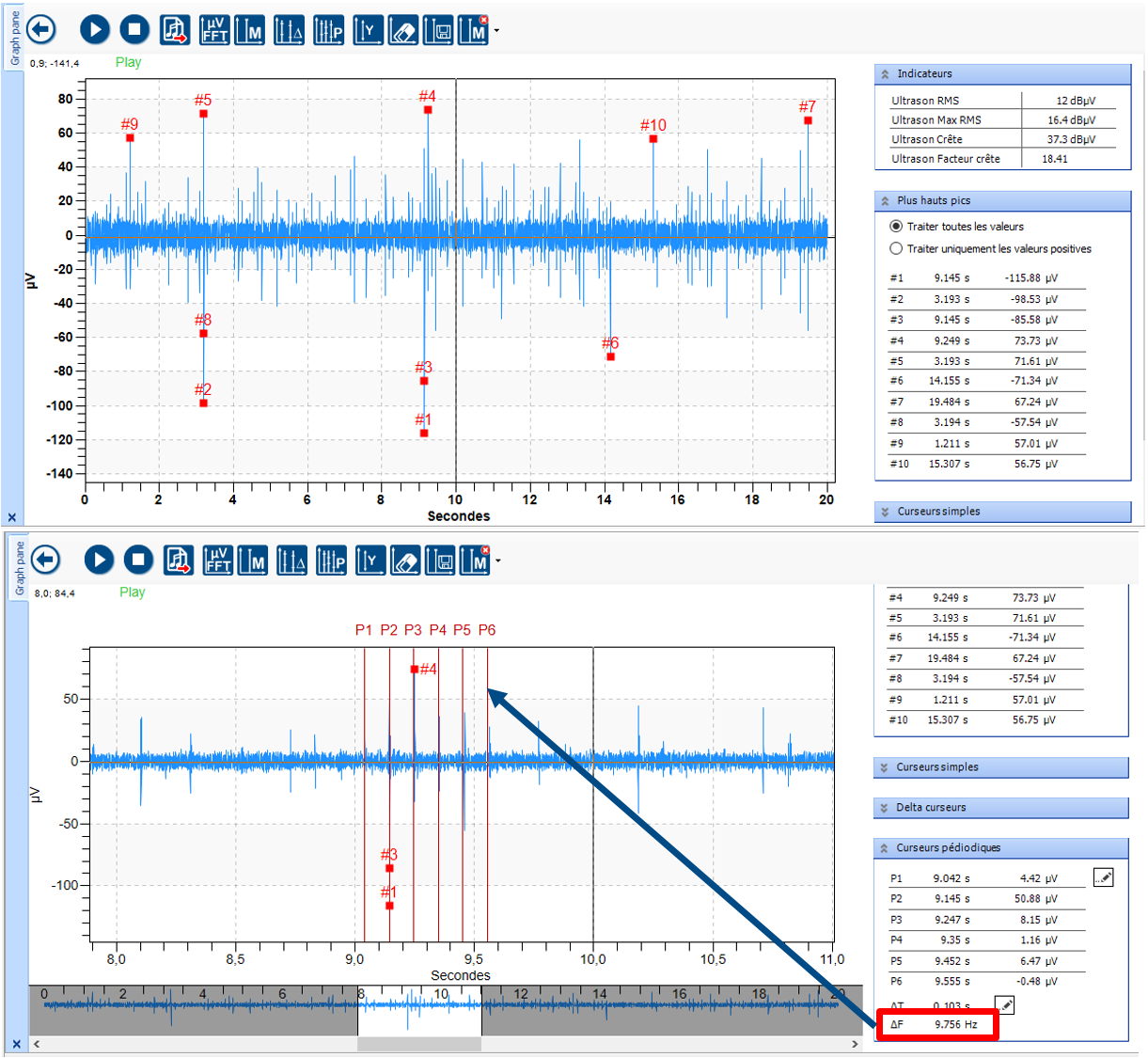
By zooming in on the time spectra, one can observe repeated shocks at 9.756 Hz (see the table of characteristic frequencies below) related to the frequency of the inner ring of the bearing of the low-speed reduction gear (opposite side of transmission). Diagnosis confirmed on the frequency spectrum (see below).
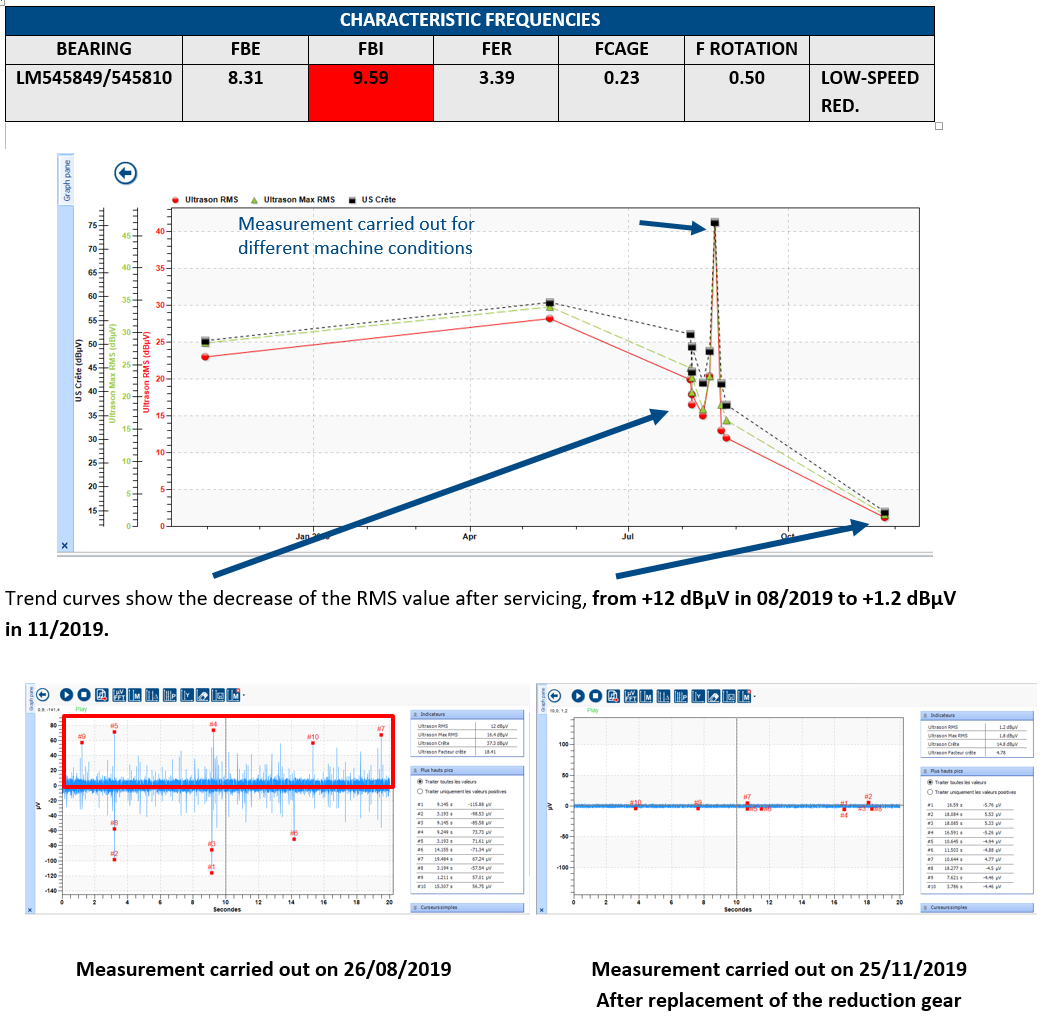
Replacement of the reduction gear during a scheduled production shutdown, which avoided an untimely breakdown which could have generated significant expenses due to production losses.
Monitoring of the degradation of the bearing of a low-speed reduction gear (opposite transmission):
• Machine: Lime mud filter – Bearing opposite transmission 23140 CCK – 14.28 RPM
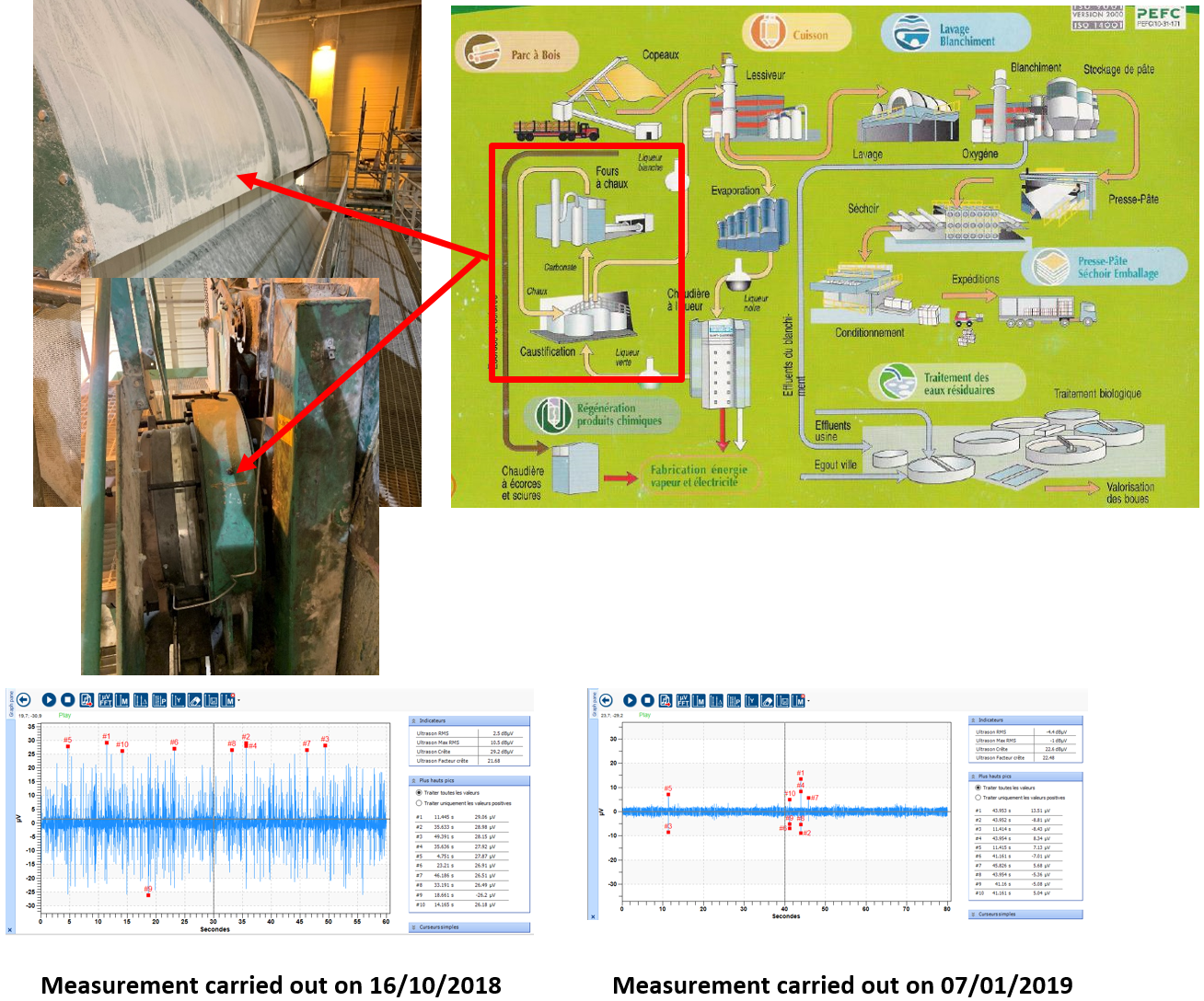
On time spectra (same scales), one can observe the occurrence of shocks right from the beginning of the monitoring of this bearing. After replacement of the bearing, all shocks disappeared. The rolling elements were no longer held in their housings.
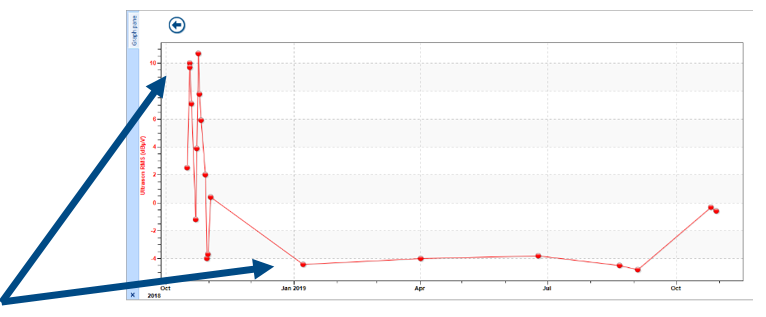
Trend curves show the decrease of the RMS value after servicing (from +10.7 dBµV in 10/2018 to -4.4 dBµV in 01/2019).
Conclusion
The challenge was taken up by the Reliability team of this paper mill. The implementation of a preventive maintenance program for 70 rotating machines has had a beneficial and decisive outcome. It will be extended to 100 other machines over the course of 2020.
SDT International offered a simple solution and suitable measurement tools, along with a LEVEL1 ASNT certified training program. Users have acquired a comprehensive mastery of this technology, which was new to them.
- Using ultrasound technology to monitor low-speed rotating machines, this paper mill was able to avoid a number of unscheduled shutdowns (see examples below) and highlight the complementarity of ultrasound and vibration technologies.
- Based on this experience, the Reliability department has decided to initiate ultrasound-aided greasing campaigns. Using suitable equipment (software and hardware), this acoustic lubrication program will ensure perfect greasing by indicating:
- the right grease,
- the right greasing location,
- the right greasing interval,
- the right quantity of grease to add,
- the right indicators for the lubrication condition.
Thus, full traceability of the lubrication program will be ensured.
- The versatility of ultrasound detector SDT270DU also allowed for the implementation of:
- An energy-saving policy (detection of compressed air leaks, control of steam traps).
- Control of tubeblowers (detection of leaks on steam valves).
- Preventive maintenance of high voltage electric systems (corona, tracking, arcing).
Author: Patrice DANNEPOND – Area Sales Manager SDT Ultrasound Solutions



